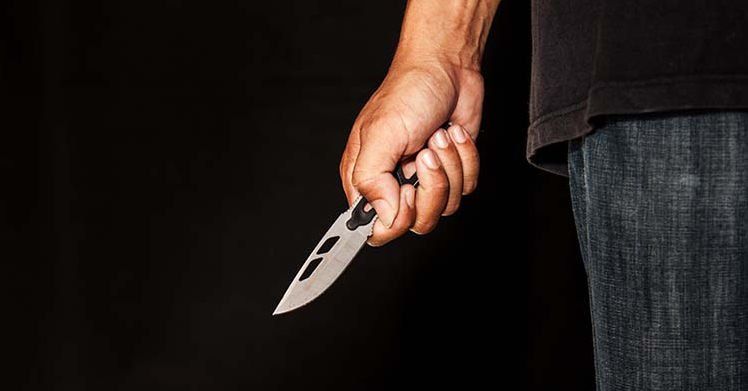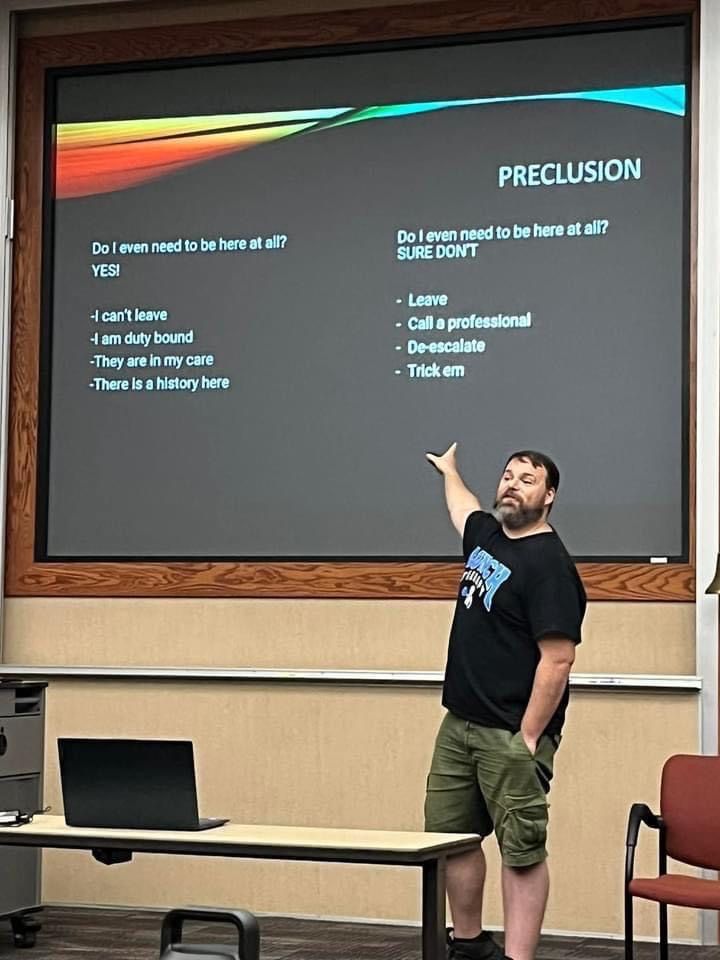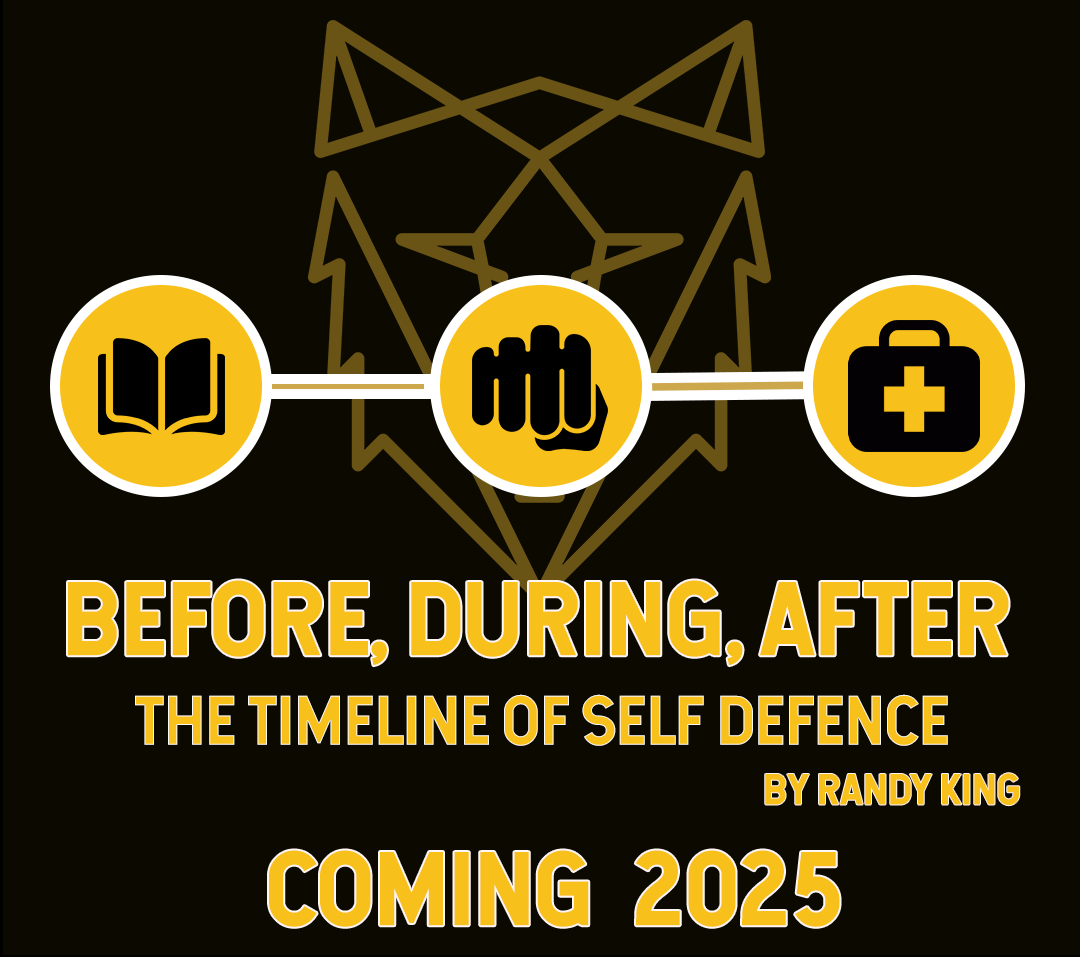The Least-Talked-About Part of Knife Defense
Let's Get Real ABout a Taboo Subject.

If you have been doing self defense for any stretch of time, you know that knife defense is a key component of most systems. Even so, there are many problems that come up when people, teach, train and discuss the knife. In this blog series, I will be addressing knife defense and peeling back the bs that surrounds it.
Human beings love to make things far more complicated than they are, and knife defense is an area where everyone gets SUPER tribal! Only their system works – everyone else’s stinks! (A lot like that old saying about opinions and that area on the lower body …) The tribalism does make sense though as the stakes are very high in knife defense.
Let’s be fair – most people who teach knife defense have never had a blade pulled on them, so it is all hearsay. Even the people who have had blades pulled on them don’t really have a large enough sample size to make a “system” out of those encounters, myself included. Yes, I have been stabbed – two and half times even! (Yes, a half – it was a fork so I don’t count it as a full point … but the marketing guy in me really wants to say I have been stabbed six times, you know … because of each prong …) In fact, saying I was stabbed six times seems much more in line with the way the industry promotes itself – they take a popcorn kernel of a story and blow it up into a whole bag.
Not only have I been stabbed, I have had knives pulled on me at least eighteen separate times during my career as a bouncer and close protection guard. Does that make my system the best? The answer is still no. I wouldn’t take driving lessons from an instructor that had driven three times and then just went car shopping, and neither should you. Three important points to remember when training knife defense:
- Systematization is rough to use under stress. You need habit and ritual to help you survive a life-threatening encounter, so being athletic and mobile is more helpful than even the best knife defense, since you most likely will not even see the blade.
- If you don’t have solid operant conditioning to negative stimulus, you may be starting the encounter with a stab wound you might not even realize you have. That is dangerous – and as my friend Dillon Beyer always says, “Dying second is not winning” (more on this in a future blog).
- I survived all my encounters through luck. Training did not pop in – not because training is wrong, but because the way we train knife defense is wrong; the attack indicators are wrong, the range is wrong, the energy is wrong.
Using what we have above, we need to understand that the fundamental training is often incorrect or incomplete. When it comes to knife defense, there are three major types of situations you must be able to deal with. (Don’t believe me? Hit up the YouTubes! Fact-check everything!)
- Knife in motion: the person is aggressively coming at you, which means you and they are in motion.
- Knife is static: the knife is a part of the conversation; they are using it as a very convincing negotiation piece. It is usually touching your flesh.
- Knife is deployed during the encounter: In far more situations than you think the knife is produced during the fight, not at the beginning..

(Knife on the ground is NOT what the industry is selling you. More on this in a future blog.)
In this blog, let’s focus on number 3, where the knife is deployed mid-encounter. I get a lot of blowback when I talk about this in seminars. It blows peoples minds that a weapon would not be in use right from the get-go. The reason that people have trouble with this concept is because they are looking at knife violence like an action movie. They think that every single attacker is an ex-con former Navy SEAL with a personal grudge against them, so every fight is a fight to the death. That is simply not the case for most civilians.
Seriously, if you follow four simple rules you can probably go your entire life without seeing a knife in combat:
- Don’t get a job where you tell the public “No”
- Don’t join and/or betray a violent group
- Only sleep with people you have permission to sleep with
- Don’t be a dick in places where 14-to-24-year-old humans get their minds altered
Bam! Knife defense level expert achieved! (Just send me 500 dollars now and 500 annually and I will send you a new certificate every year so you can prove to people just how safe you are…)
Now if you do end up in an encounter and the person has a knife, there is only one type of situation in which they are guaranteed to pull it. Why might they not immediately use it? Well, if it is not personal, and you are not a threat, there is no reason to risk the jail time for using a weapon. People do not pick fights they are going to lose for free. If a person is harassing you, and they are not using the blade to convince you, it may never come out at all. We tossed so many people out of the bar that had knives in their pockets. Guess what – if you don’t train under stress to draw, you don’t tend to realize it is an option.
“But Randy, you said there was only one situation in which a knife is guaranteed to be produced if it is present! What situation is that?”
Great question, random internet reader! The answer is, a situation where the person attacking is losing grievously. That’s right – being too good at kicking people’s asses tends to make them use higher levels of force on you. So if your attacker underestimated you, they might scale up the attack to make sure they are successful.
When I was stabbed the second time, the knife was not deployed until about 35 seconds in, and when it isn’t present at the beginning you will rarely see it during. I survived by luck, blind luck. The old FMA adage is true – when deployment happens mid-fight, at this time the knife is felt not seen .
So, how are you training? Do you have play and sensitivity drills that teaches you what it feels like when a person reaches for a weapon? Hell, in the knife story I used here, the person dropped his weapon after stabbing me; when he went to reach for it I read that as him wanting to wrestle me.
If you liked this, share this – and stay tuned for my next blog “The Myth of Knife Defense” coming in a few weeks.
Randy King
@randykinglive









